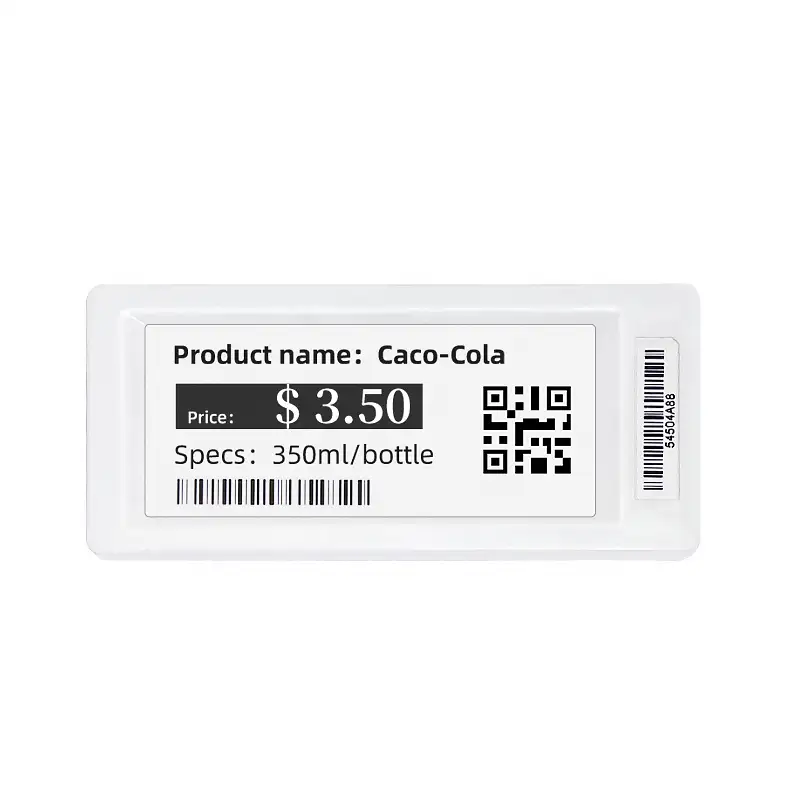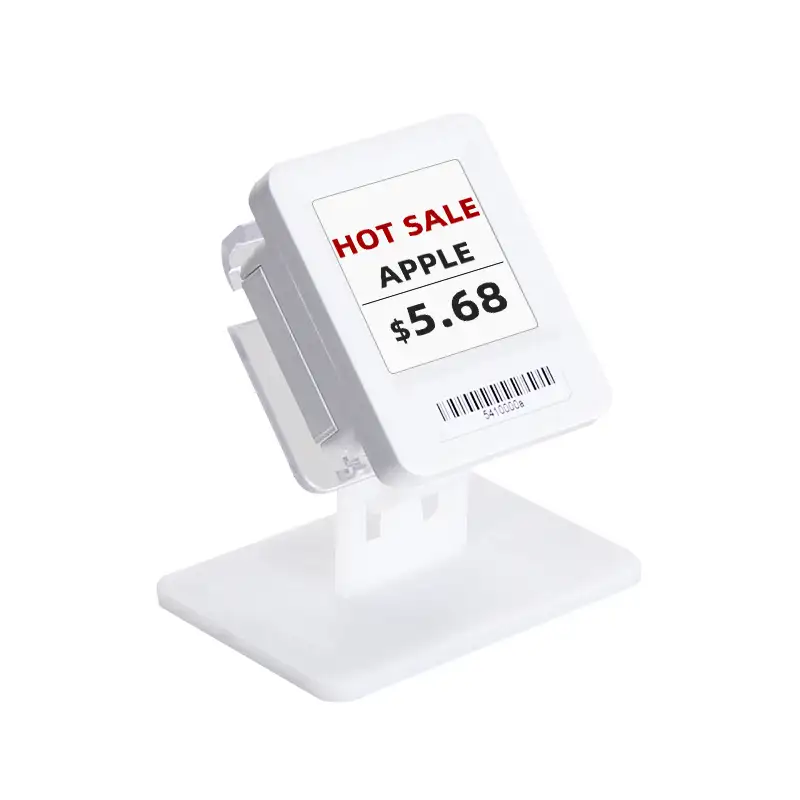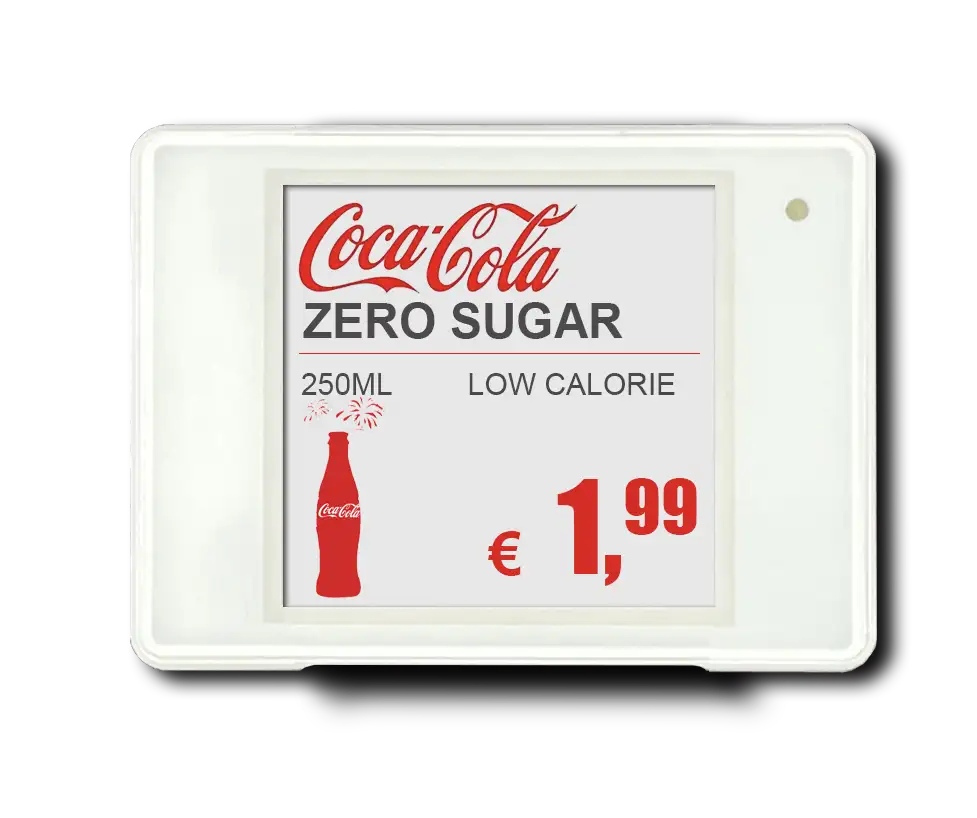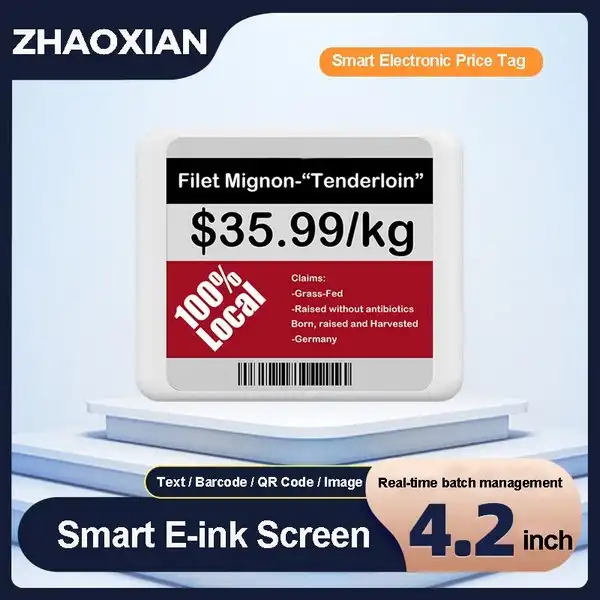1.Introduction of zxl290 electronic shelf tags
An electronic shelf tags, also known as Electronic Shelf Label (ESL) or E-ink price tag, is an electronic display device that sends and receives information. It is mainly used for electronic labels displaying price information in supermarkets, convenience stores, pharmacies, etc.
The electronic shelf tags on the shelf can replace the traditional paper price tag. Each electronic shelf tag is connected to the computer database of the mall through a wired or wireless network, and the latest commodity information is displayed on the screen on the electronic shelf tag.
In fact, the electronic shelf tags has successfully incorporated the shelf into the computer program, eliminating the situation of manually changing the price tag, and realizing the price consistency between the cash register and the shelf.
ZXL290 is an electronic price tag with a 2.9-inch display,Here’s a picture of the ZXL290 electronic shelf tags.

2.Working Principle of the zxl290 electronic shelf tags
The working principle of the zxl290 electronic shelf tags is realized by wireless communication technology. The following are the detailed steps of the working principle of the electronic label:
1.The read-write will send a stimulation signal to the surrounding electronic label, usually is the wireless radio frequency signal, in order to activate the electronic label, the read-write will send a stimulation signal to the surrounding electronic label, usually is the wireless radio frequency signal, in order to activate the electronic label.
2.When the electronic shelf tags is in the read-write communication range, it will receive the stimulation signal, and this as the energy source.
3.The electronic shelf tags has a memory inside for storing related information, such as the serial number of goods, date of production, etc.. This information can be read by the subsequent read-write.
4.Once the electronic shelf tags receives the excitation signal and stores the relevant data, it will send a response signal back to the read-write. This signal contains the tag’s stored data.
5.The reader receives the response signal from the electronic tag and then decodes the signal to obtain the data stored in the tag.
6.The reader-writer processes the decoded tag data, such as displaying it on a screen or matching it with other information in a database. Through this series of steps, the reader/writer can communicate with the activated the electronic shelf tags and access the data stored inside the tag. This allows electronic tags to have a wide range of applications in areas such as logistics, inventory management and retail.
The workflow of the electronic shelf tags is shown in the diagram as follow:

3.Application of electronic shelf tags
3.1 Intelligent warehousing
The electronic shelf tags are the traditional warehousing transformation into intelligent warehousing the most basic step, although still need manual sorting, but has realized all the systematic management. Docking warehouse management system to open the data and goods connection, through the indicator, assist in finding picking. Intelligent warehousing is the lowest cost and most obvious effect of a solution.

3.2 Supermarket Department Store-Fresh Fruits
Large supermarkets change price tags in large quantities and are prone to errors, often requiring more than 10 people a night to complete.
And for the price of fresh fruit such as the need to change several times a day, coupled with product promotional price changes, are a headache for people tedious operation.Electronic shelf tags can perfectly solve these problems, directly with the system docking, a key to change the price!

3.3 Boutique stores
The electronic shelf tags(ESL) are also used in boutique stores, high-end stores, import and export stores, red hotels and other stores, in the use of reducing labor, strengthening price control, showing the role of commodity grade. Boutique smart supermarket will be the perfect link between online and offline, online selection, offline pickup, precise positioning, price consistency.

3.4 Electronic label in other applications

4.The functions of electronic price tags are as follow:
1.Fast and accurate price display to improve customer satisfaction;
2.More functions than paper labels (such as display of promotional signs, prices in multiple currencies, unit prices, inventory, etc.;
3.Reduce the production and maintenance costs of paper labels;
4.Remove technical barriers for actively implementing the price strategy;
5.Unify online and offline product information.
ZHAOXIAN can provide different sizes of product similar as zxl290. The 2.9 inch electronic price tag is only one of them. For more information about electronic price tags, please refer to our article
What is an electronic price tag.
4.Others
According to the official news of Bluetooth SIG, Bluetooth version 5.4 has been released, and the new version brings a brand new standard for electronic price tags. It is understood that the update of the relevant technology, on the one hand, can make a single network in the price tag connection volume expanded to 32,640, on the other hand, can realize the gateway and the price tag of two-way communication. For more information, please see the news Bluetooth Technology Is Standardizing Electronic Shelf tags (ESL).
| Product name | ZXL290 Electronic shelf tags |
| Screen size | 2.90 inch |
| Material | ABS |
| Color | BW/BWR |
| Battery life | 3-5 years (2-4 updates per day) |
| Application | Supermarkets, shopping malls, medical treatment, etc. |
 Professional anti-theft &lable&tag provider
Professional anti-theft &lable&tag provider





